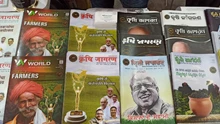
With fuel shortages raging across the country and prices skyrocketing as the currency rapidly depreciates and foreign reserves dwindle, Sri Lankans are experiencing difficulties accessing food, among other things. Domestic production of pulses such as black mung bean and green mung bean has returned, and yields for this year are looking promising as farmers prepare to enter the export market, which is showing good prices, according to the Global Pulse Confederation (GPC).
Imports are extremely important. Sri Lanka is struggling to adapt to a global trade environment strained by shipping issues, inflation, and skyrocketing commodity prices. The abrupt switch to all-organic farming may have exacerbated the crisis, but the motivation behind the transition - lowering foreign expenses on imports, of which fertilizer accounts for 1.6% - is potentially having long-term benefits for the country's agriculture, according to the confederation in a press release.
"As a result of the crisis, the government and the department of agriculture are laying the groundwork for a restructuring of domestic production of certain crops," said Mahmud Abdel Cader, CEO of the Pulses Splitting and Processing Industry. "The idea is to foster and encourage local production of some types of pulses that were previously grown in the country."
Sri Lanka, which was self-sufficient in black matpe and green mung beans until the 1990s - two essential food items whose imports have been restricted for a few years - is reconsidering domestic cultivation.
"A first change has been to consider growing locally in order to replace a few imported pulses, which the government has banned, with domestically produced pulses." As a result, the focus is now on developing and beginning to produce two types of pulses, black mung beans, and black matpe, to see what levels of self-sufficiency they can achieve," Cader said in the release.
Under interim President Ranil Wickremesinghe, the opening of food imports in June, as well as credit lines offered to China and India, are helping to reduce the threat of a food crisis.
Importantly, this financial assistance is easing the transition to increased domestic production, and while crop yields for farmers who choose to grow Sri Lankan pulses are bringing small rewards, it added.
Despite the fact that production did not meet the Department of Agriculture's targets for this year's crops, production levels of both black matpe and green mung beans were higher than expected: final volumes in June 2022 reached around 2000 and 5000 tonnes, respectively. Cowpea yields for the Yala harvest were estimated to be around 4000 tonnes.
"Of course, the main challenge is to keep production levels stable and close to families' needs," said Rajendren Gnanasambanthan, President of the Essential Food Commodities Importers and Traders' Association.
"In the meantime, local crops are adjusting to new levels of production; for example, green mung beans and cowpeas are doing very well in terms of yields, and farmers are increasing their production for exporting purposes because the market price for these types of pulses is very good right now."









